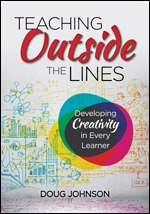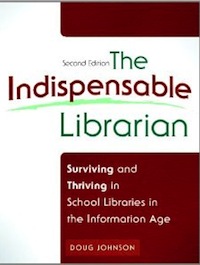Wednesday
Oct222014
One platform or two (or three)?
 Wednesday, October 22, 2014 at 05:16AM
Wednesday, October 22, 2014 at 05:16AM You've heard it said or said it yourself - "We're a Mac district." or "Our school only has Windows computers." or "We've standardized on Chromebooks." Supporting a single computing platform is such a common practice for schools, I didn't think too hard responding to a question that came in last week's e-mail:
May I ask for your quick thoughts regarding mixing PCs and Macs in a 1:1 deployment? We will be launching our 1:1 in August of 2015, and we (the technology committee on which I serve) think there could be some issues with mixing platforms. May I ask: "What are the potential negatives to consider before going to a hybrid environment?"
We think mixing platforms means your software options can be limited to web based software (like Google docs) instead of local installations of Microsoft Office. (I know...there is a cloud based version of Office...). What has been your experience or what are your thoughts on this? We're currently 99% Mac. Thank you for any information you can provide.
Betty
My response:
Philosophically, I like the idea of each person being able to use the device he or she prefers. Such a practice honors the individual's learning styles and behaviors.
But on a practical side, a single platform makes much more sense, given the fixed amount of funding one has to spend on technology. A single platform maximizes training opportunities, support and maintenance, and security. (My last school was 99% Macs and my current school is 99% PCs. These economies apply to either platform.) I will only adopt software personally (and encourage it in schools) that is Windows/Mac cross platform. (Sorry iBook Author, Explorer, Keynote, etc.)
I would say that the upcoming decision about computer OSs will not be Mac vs PC, but a machine-based OS (Windows or MacOS) vs a cloud-based OS (Chromebooks or Chromeboxes). When a Chrome device can do about 95% of what a regular computer can do at half the cost in purchasing and 1/10th amount of support, it seems a great way to put more tech in the hands of more kids.
Philosophically, I like the idea of each person being able to use the device he or she prefers. Such a practice honors the individual's learning styles and behaviors.
But on a practical side, a single platform makes much more sense, given the fixed amount of funding one has to spend on technology. A single platform maximizes training opportunities, support and maintenance, and security. (My last school was 99% Macs and my current school is 99% PCs. These economies apply to either platform.) I will only adopt software personally (and encourage it in schools) that is Windows/Mac cross platform. (Sorry iBook Author, Explorer, Keynote, etc.)
I would say that the upcoming decision about computer OSs will not be Mac vs PC, but a machine-based OS (Windows or MacOS) vs a cloud-based OS (Chromebooks or Chromeboxes). When a Chrome device can do about 95% of what a regular computer can do at half the cost in purchasing and 1/10th amount of support, it seems a great way to put more tech in the hands of more kids.

Given a fantasy world of unlimited tech support, unlimited hardware and software budgets, a mixed platform would offer personal choice of desktop, laptop, or tablet; operating system; and software. But I've yet to work in such a world.
And I would say more than ever, machines are uniformly able to do most computing tasks. The choice of a Mac or PC, a tablet or a Chromebook, a desktop or a laptop reflects personal experiences (and hence comfort levels), rarely the need to do specific tasks.
Are tech departments being stubborn or practical in supporting a single platform and thereby reducing support costs?
Love to see some discussion around this.









Reader Comments (2)
It could be assumed that tech departments are forward thinking (it's technology after all). But I don't think that's always the case. Just as educators default to teaching how they were taught I think quite often tech departments default to what they are most comfortable with. If educators and students are being asked to "think outside the box" then I think it is only appropriate for tech departments to as well. The question still needs to be "what is best for the learning environment?" If that is multiple platforms and that makes it a little more difficult on the back end...oh well. Solving problems like that is what I think of as innovation.
Hi Lissa,
Tech departments do default to those systems with which they are most familiar. We tend to underestimate the amount of time learning can take and most of us are time-pressed. Not an excuse, but perhaps a cause of much reluctance to change.
Nice to hear from you!
Doug